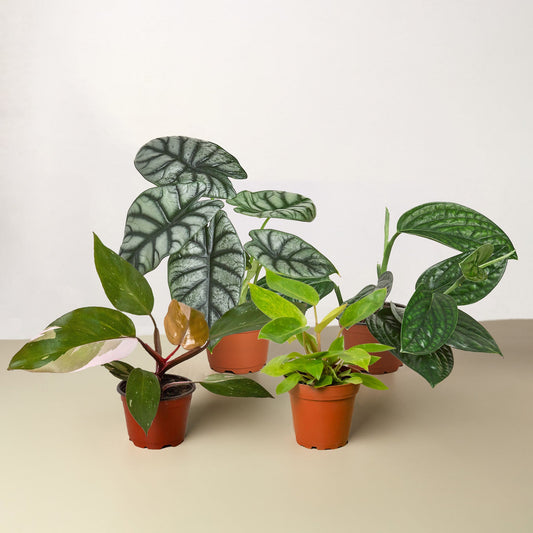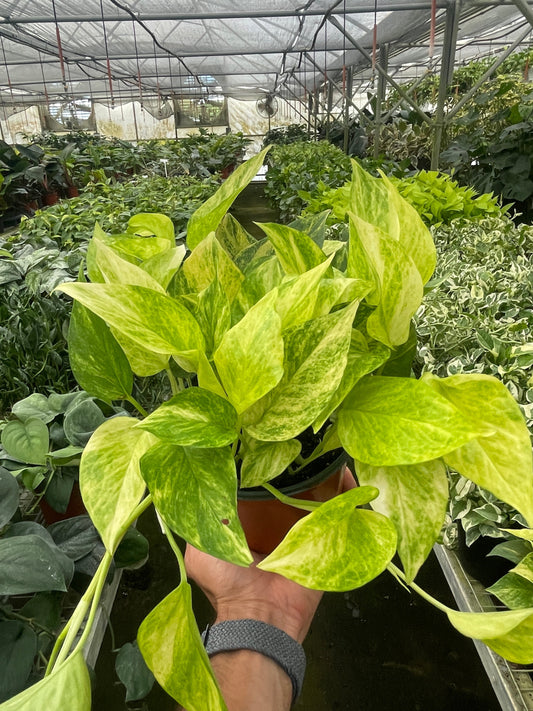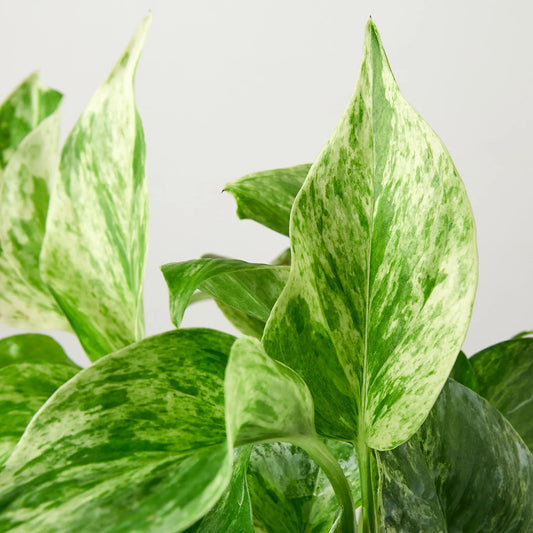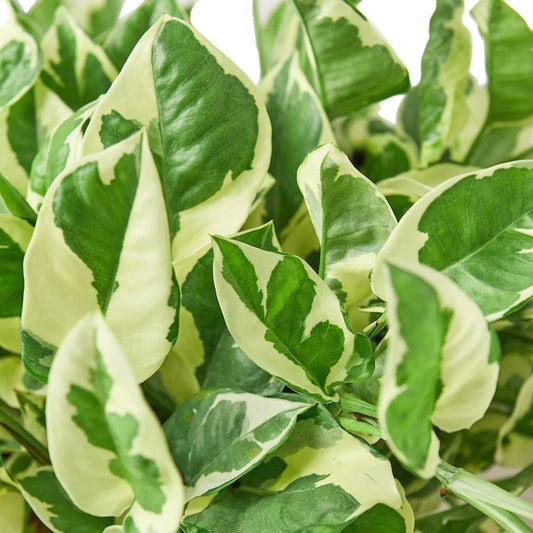Medallion Calathea Aerial Roots: Everything You Need to Know
Cafe Planta Team
Have you ever wondered about those quirky little roots sprouting out of your Medallion Calathea? You're not alone! These fascinating aerial roots might look a bit strange, but they're quite normal and can tell you a lot about how your plant is doing. Let's unpack everything you need to know about these intriguing features and how they fit into your plant care routine.
In this article, we'll cover what makes these aerial roots tick, why they appear, and how to care for your Medallion Calathea while keeping its unique needs in mind. We'll also share some practical tips to ensure your plant thrives and looks its best. So, grab your watering can and let's get started on understanding these little wonders!
What Are Aerial Roots?
Aerial roots are the roots that grow above the soil or water, often appearing on various types of plants, including our beloved Medallion Calathea. If you've noticed these roots on your plant, you might be wondering what purpose they serve. Well, they play a role in supporting the plant and aiding in nutrient absorption, especially in their natural habitat.
In the wild, Calatheas grow in the understories of tropical forests, where they might use these roots to cling onto surfaces like tree trunks or rocks. These roots help them stabilize while they stretch towards light sources and absorb moisture from the humid air around them. In our homes, they might not have the same function, but they can still indicate how well we're meeting our plant's needs.
So, if you see these roots peeking out, don't panic! They are a natural part of the plant's growth process and can even give you clues about its health and environment. Keep reading to learn more about why they appear and what you can do to support your plant.
Why Do Medallion Calatheas Develop Aerial Roots?
There are several reasons why your Medallion Calathea might develop aerial roots. Understanding these reasons can help you provide better care and create an ideal environment for your plant to thrive. Here are the main factors that contribute to the growth of aerial roots:
- Environmental Adaptation: As mentioned earlier, in their natural habitat, Calatheas use aerial roots to climb and absorb moisture from the air. If your plant develops these roots indoors, it might be responding to environmental conditions that mimic its natural habitat.
- Humidity Levels: High humidity can encourage the growth of aerial roots. If your home has a high humidity level, your Calathea might develop these roots as a way to take advantage of the moisture in the air.
- Watering Practices: Over-watering or under-watering can sometimes trigger the growth of aerial roots. These roots might form when the plant is trying to access more moisture or escape waterlogged soil.
- Growth and Maturity: As your Calathea matures, it may naturally develop aerial roots as part of its growth process. This is a sign that your plant is healthy and growing well.
By understanding these factors, you can make informed decisions about how to care for your Medallion Calathea and support its natural growth patterns.
How to Care for Aerial Roots
Once you've identified the aerial roots on your Medallion Calathea, you might wonder how to care for them. The good news is that they require very little special attention, but there are a few things you can do to ensure they remain healthy:
- Humidity: Keep the humidity levels around your plant high. Using a humidifier or placing a tray of water near your plant can help maintain the necessary moisture in the air.
- Misting: Lightly mist the aerial roots with water to mimic their natural environment, encouraging healthy growth and moisture absorption.
- Soil Care: Ensure the soil is well-draining and not overly wet. Aerial roots can sometimes indicate that the plant is struggling with waterlogged soil, so check your watering routine.
- Pruning: If the aerial roots become too long or unruly, you can trim them back slightly. Use clean, sharp scissors to avoid damaging the plant.
These simple steps can help you manage the aerial roots on your Calathea and keep them in top shape. Remember, these roots are a normal part of the plant's growth, and with a little care, they can thrive alongside the rest of your plant.
Common Issues and Solutions
While aerial roots are generally harmless, they can sometimes indicate underlying issues with your Medallion Calathea. Here are some common problems you might encounter and how to address them:
Overwatering
If your plant's soil is too wet, it might develop aerial roots as a response. Check the soil moisture level regularly and adjust your watering schedule accordingly. Allow the top inch of soil to dry out before watering again to prevent root rot.
Low Humidity
If the aerial roots appear dry or shriveled, it might indicate that the air is too dry. Increase the humidity around your plant by using a humidifier or placing a tray of water nearby. Grouping plants together can also help create a more humid microclimate.
Pests or Diseases
Sometimes, pests like spider mites or diseases can stress your plant, leading to unusual root growth. Inspect your plant regularly for signs of infestation or disease and treat any issues promptly with appropriate measures, such as insecticidal soap or neem oil.
By addressing these common issues, you can help your Medallion Calathea remain healthy and vibrant, ensuring its aerial roots are a sign of well-being rather than trouble.
Choosing the Right Environment for Your Calathea
Creating the perfect environment for your Medallion Calathea can help promote healthy growth and minimize the occurrence of aerial roots due to stress. Here are some tips for setting up an ideal environment:
- Light: Calatheas prefer indirect, filtered light. Too much direct sunlight can cause leaf burn and stress, leading to increased aerial root growth.
- Temperature: Keep your Calathea in a warm room with temperatures between 65-80°F (18-27°C). Avoid placing it near drafts or heating vents.
- Soil: Use a well-draining potting mix to prevent waterlogged soil, which can lead to root rot and aerial root growth.
- Potting: Choose a pot with drainage holes to allow excess water to escape and prevent root issues.
By providing the right conditions, you can help your Calathea thrive, reducing the need for aerial roots to compensate for environmental stressors.
Repotting Your Medallion Calathea
Repotting can be a great way to refresh your Calathea's environment and address any issues related to aerial roots. Here's how to do it:
- Choose the Right Time: Spring or early summer is the best time to repot your Calathea, as it coincides with the plant's active growth period.
- Select a New Pot: Choose a pot that is one size larger than the current one, ensuring it has drainage holes.
- Prepare the Soil: Use a well-draining potting mix designed for houseplants. You can add perlite or orchid bark to improve drainage.
- Remove the Plant: Gently remove the Calathea from its current pot, taking care not to damage the roots. Shake off excess soil and inspect the roots for any signs of rot or damage.
- Plant in the New Pot: Place the Calathea in the new pot and fill it with fresh soil, leaving some space at the top for watering.
- Water Thoroughly: Water the plant well, allowing excess water to drain out. Place it back in its preferred location and monitor its growth.
Repotting can help rejuvenate your Calathea, providing it with fresh nutrients and a more suitable environment for healthy growth.
Decorating with Calatheas
Beyond their fascinating aerial roots, Medallion Calatheas are beautiful additions to any home, bringing a touch of tropical flair with their striking foliage. Here are some ideas for incorporating them into your decor:
- Statement Plant: Use a large Calathea as a focal point in your living room or entryway. Pair it with a decorative pot to enhance its visual appeal.
- Group Display: Arrange multiple Calatheas with other tropical plants, like Monsteras and Philodendrons, for a lush, jungle-inspired look.
- Shelf Decor: Place a smaller Calathea on a shelf or side table, allowing its vibrant leaves to spill over the edges for a dramatic effect.
- Hanging Planters: Use hanging planters to create a vertical garden, adding interest and greenery to your space.
By incorporating Calatheas into your decor, you can enjoy their stunning beauty while also benefiting from their air-purifying qualities.
Connecting with Other Plant Lovers
Sharing your love for Medallion Calatheas and their aerial roots can be a fun way to connect with other plant people. Here are some ways to engage with the plant community:
- Social Media: Share photos and tips about your Calathea on platforms like Instagram or Facebook. Join plant-related groups to exchange advice and experiences.
- Local Plant Swaps: Attend plant swaps or meetups in your area to trade cuttings, learn from others, and expand your plant collection.
- Online Forums: Participate in online plant forums or discussion boards to ask questions, share knowledge, and connect with fellow plant lovers worldwide.
Engaging with the plant community can provide valuable support, inspiration, and friendship as you navigate your plant care journey.
Final Thoughts
Understanding and caring for your Medallion Calathea's aerial roots can help you create a thriving environment for your plant. By focusing on proper humidity, watering, and environmental conditions, you can ensure your Calathea remains healthy and beautiful.
At Cafe Planta, we're passionate about helping you care for your plants. We offer a variety of houseplants and accessories to suit your needs. If you have questions about plant care, feel free to email us or reach out on Instagram. Let's grow together and enjoy the beauty of nature in our homes!



















